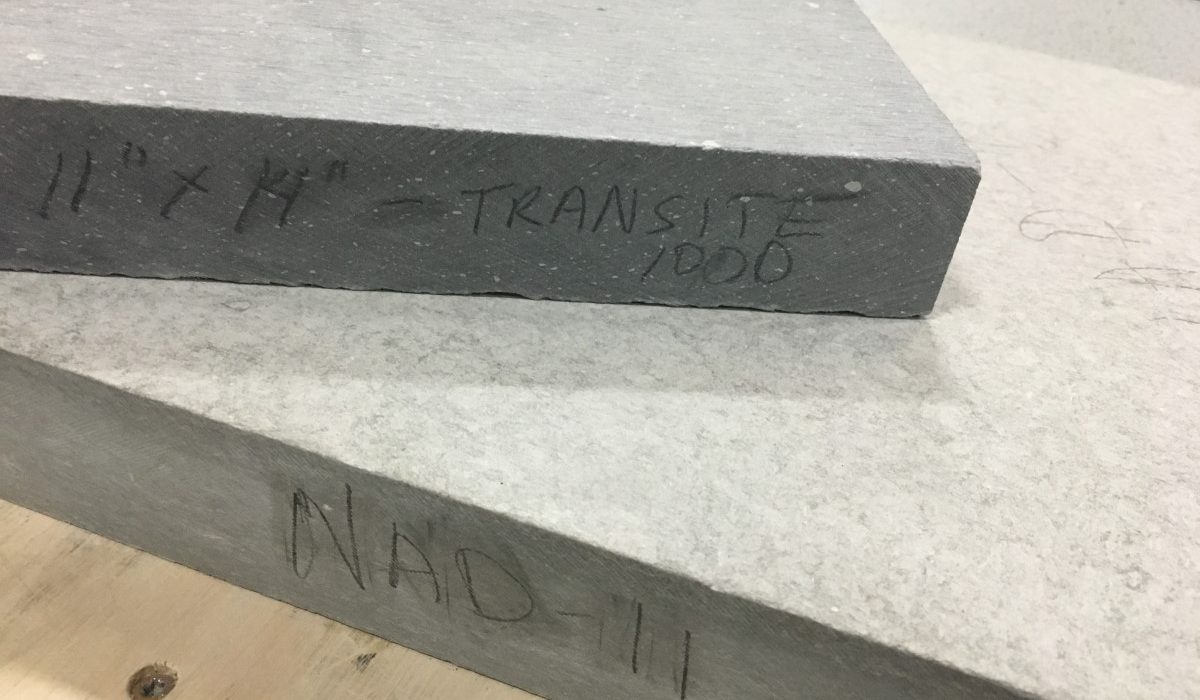A Comparison of Two Common Structural Insulation Options
Are you trying to select the right insulation product to use that requires strength, thermal stability, electrical insulation or machinability?
There are two popular materials being used — Transite 1000 and NAD-11. Let’s compare them and help you decide which to use.
High Temperature Applications
You can use Transite 1000 and NAD-11 to insulate load-bearing gaskets, industrial oven shelving, soldering plates, spacers, supports, collars, bushings, transformer spacers or laboratory benchtops.
Board Composition
Transite 1000 is a monolithic non-asbestos fiber cement board and NAD-11 is a glass-mica-quartz non-asbestos cement board.
Sizes & Thicknesses
NAD-11 is available in 48 x 36 inch boards with thickness options ranging from 0.25 to 3.0 inches.
Transite 1000 is available in 48 5/8 x 96 5/8 inch boards with thickness options ranging from 0.25 to 3.0 inches.
Using the same thickness in order to compare the two, a sheet of Transite 1000 has an extra 20 square feet per board than NAD-11.
Density and Compressive Strength
The density of NAD-11 is 109 pounds per cubic foot with a compressive strength of 17,110 pounds per square inch.
Transite 1000 is lighter than NAD-aa and has a density of 98 pounds per cubic foot with a compressive strength of 13,350 pounds per square inch.
NAD-11 is a heavier, stronger and more load-bearing board with a density of 109 pounds per cubic foot with a compressive strength of 17,110 pounds per square inch.
Temperature
Transite 1000 is a non-combustible board and can withstand operating temperatures up to 1000°F.
NAD-11 is suitable for applications that require continuous operation in temperatures up to 932°F. It will begin to break down at a lower temperature than Transite 1000.
Thermal Conductivity
At a higher temperature, Transite 1000 has a lower conductivity than NAD-11 and less heat travels through it.
Transite 1000’s thermal conductivity is 2.40 btu-in/(hr-ºF-ft²) @ 250º F. NAD-11’s thermal conductivity is 2.57 btu-in/ (hr-ºF-ft²) @ 212º F.
Cost Comparison
Cost comparison differs based on thickness. On a 1″ thick board, the price per square foot for Transite 1000 is approximately 7% higher than it is for NAD-11 which means NAD-11 is a little less expensive than Transite 1000.
Handling, Engineering Controls
Both materials can generate a lot of dust depending on your application so make sure there is a proper process enclosure, local exhaust ventilation or other engineering controls installed while working to prevent exposure from any potential airborne contaminants below the recommended or statutory limits.
Power equipment should be fitted with a properly designed dust collection device and we can provide SDS sheets upon request.

